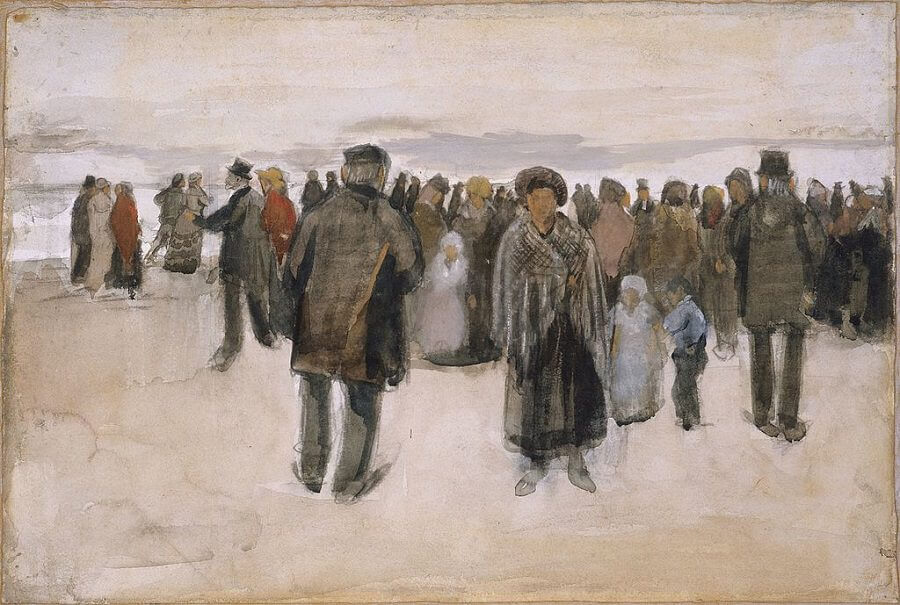Beach at Scheveningen, 1882 by Vincent van Gogh

This painting done early in Van Gogh's career reflects the artist still learning and formulating his style. His stay in The Hague was an important period for him, and was a time during which he set the foundations for his later development as an artist. It was an active centre for the arts and The Hague School was widely admired. Although his formal training with Mauve was truncated due to on argument, Van Gogh was nonetheless surrounded by a nurturing artistic climate. The figures here are sketchily drawn, in an Impressionistic manner though he was not truly exposed to their techniques for some years. He was still unsure of himself working in paints, being more accomplished in drawing, and with the added pressure of the expense of paints.
In Beach at Scheveningen, 1882, the group of figures that form a frieze arrangement indicate his grasp of perspective, though the specifics of their physical location in relation to the scene ore unclear. Interestingly the inclusion of the bright red figure in the middle distance is a clue to the manner in which his art would take form, and his subsequent experimentation with colour.




















